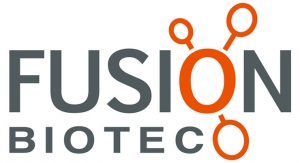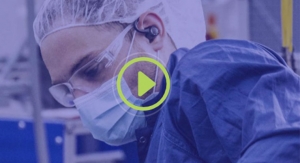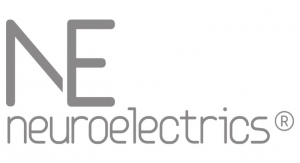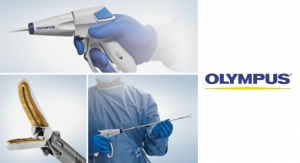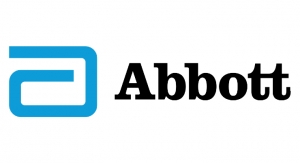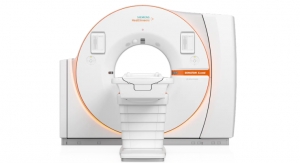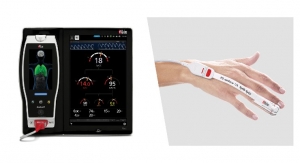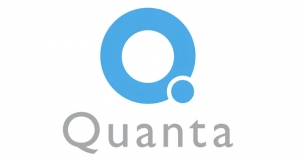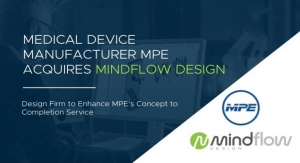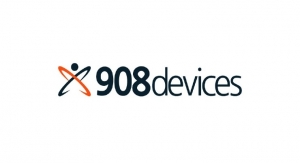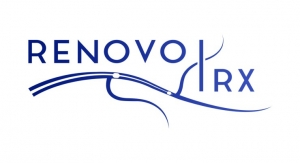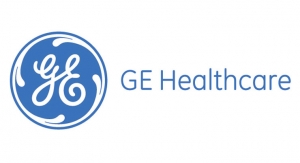Steve Maylish, Chief Commercial Officer, Fusion Biotec; Bruce Sargeant, Founder & CEO, Fusion Biotec11.08.16
Any development project brings difficulty in understanding what portion of the process adds value, and what just adds time. No one wants to spin their wheels when trying to get to market. Applying research and translating it into a commercial application is the key to creating value for investors. There are numerous inflection points along the way; so how can a company keep focused on a commercial product to create the most value?
The first important inflection point is intellectual property (IP). For investors, IP ensures an investment and provides competitors a barrier to entry. There are markets where “first mover” advantage is key—endorsements by professional communities, building extensive databases, or locking up exclusive contracts provide barriers to entry. While that can be equally important for medical devices, creation of protectable IP is critical. Patents are filed early in the process and filing usually continues throughout the development process as new technologies and processes are applied.
Investors understand the commercialization process and time required to bring a medical device to market. Since investors plan for relatively longer return-on-investment cycles and multiple rounds of funding, the technology must be protected.
The next inflection point is moving the technology out of the lab, or creating a feasibility system. Whether the research work involves new technology, chemistry, or process, one must ask, “Can this technology be translated into a commercial product that fulfills an unmet clinical need?” Or, “What application will providers pay for?” Proving a concept’s repeatability outside the lab or feasibility in practice is the first step to commercialization.
This is the feasibility phase for most technologies, which is experimental and attempts to create an early proof-of-concept. Before documenting requirements, know if the concept has legs. Can the IP be converted into a breadboard concept proving feasibility?
Here is an excellent time to retire technical risk. The technology may work in theory, but technically, risk can still be high. At this point, it’s prudent to build a rudimentary system and work out technical challenges before committing to the entire project. The learning at this stage is invaluable, because it demonstrates a commercial product’s feasibility.
This is also the time for “fast development,” “fail early and often,” and a “trial and error” approach. This phase facilitates iterating product requirements, doing early user studies, and checking different design ideas. When formal design control starts, many unknowns have already been investigated and the technical direction is solid.
On any project, the developer decides when to start design control. This is an important step; begin too early, and there’s insufficient information. Starting too early muddies requirements with too many “to-be-determined” mandates, puts unnecessary constraints on the team, and adds little value. Begin too late, and the risk of a complete redesign increases. Continue feasibility if the team is unsure of the initial feasibility results or needs additional testing or customer feedback.
Sometimes a startup must demonstrate a feasibility system to raise the next round of funding. To conserve funds, the concept may be brought to a more advanced prototype without a formal design process. This helps meet a milestone and set the stage for additional funding, but this path is more costly. Some engineering work will also be repeated under formal design controls. However, the alpha prototype becomes input for the product requirements document, usually meaning a more comprehensive set of technical requirements. Keep in mind that data collected from the feasibility system (developed outside of design controls) cannot be submitted to the U.S. Food and Drug Administration (FDA). Clinical data must be collected with a documented device that is essentially identical to the device intended for sale.
Another path is building a research unit only. Using grant funding, one company refined its imaging technology into a powerful research tool. The company designed a medical device with the knowledge it gained from use during research. In this example, the company developed new software, followed design controls, performed clinical studies, and submitted to the FDA. The company received early sales and technical experience before a formal development process, but this approach led to a longer path to market.
How does one build the most value? For a medical design project in the startup world, it’s all about getting to market. The best value is created by developing the highest quality device in the shortest time (see “Design Tradeoffs” in September’s issue of MPO).
Highest quality in this context means a device performing its intended function perfectly and exceeding customer expectations. This implies the company completely understands user needs, which is often not the case. At this point, gaining user feedback to define the product and the market is invaluable. It provides a source of marketing requirements (for documentation) and shows understanding of the market and sales process, building investor confidence.
It’s best to separate this document into necessary, wanted, and “nice to have” requirements. A device using software of sufficient complexity should have a software development and release plan. As opposed to hardware, software can have multiple releases and doesn’t need to be “all inclusive” upon launch. This provides a quicker path to market and a planned release for subsequent software versions. However, changes in software after FDA submission will follow a formal verification process, and new claims or intended uses cannot be added without triggering a new submission.
If everything on the hardware side isn’t built in from the start, future versions should make allowances. For example, if the product needs to communicate with a cell phone, the original design should include both room for a Bluetooth module and the ability to communicate with it.
With marketing requirements determined and product features decided, the FDA design control process begins. Engineering specifications are defined during the formal design input phase, and the device is assessed for hazards, single-fault failures, electrical safety, and usability. A feasibility system is a great start, but new risk mitigation requirements often alter the design during device assessment.
A company’s quality system should cover design control processes. This means writing standard operating procedures and work instructions that describe management of design controls. This effort can be reduced if there is a plan to outsource development to groups with their own processes in place. However, there is still a responsibility to ensure the design control process is followed correctly. This is a common problem faced by first-time CEOs in the medtech world—as a medical device startup (from the FDA’s point of view), several areas must be under formal quality control.
Creating value through quality involves following a quality system process and designing for quality. Quality processes don’t mitigate poor design skills or bad marketing decisions, and it’s essential to draw desires for a new product out of customers. Turning these marketing requirements into testable engineering specifications is a skill. Designing an elegant and intuitive instrument is an art.
A product developed informally needs structure before it is ready for FDA review. This formal quality system around medical development is called design controls. It won’t be fully described here, but following is a list of the high level tasks:
Despite this article walking a straight path to commercialization, development is anything but straightforward. Development is iterative, exploratory at times, involves discovery, and the devil is always in the details. During development, there is a tendency to explore alternative design paths, which are sometimes unclear. Good design teams know how to perform in ambiguity, but usually don’t know what is “good enough” for a product. This decision is determined by the marketing team, the original marketing requirements, and decisions made during the design and discovery process. It’s easy to lose focus in this area; here an experienced and effective project manager is essential.
Once the design is finalized, careful requirement verification testing is important to create a high-value product. It is important to prove a robust and long lasting design, beyond just verifying that the product meets its requirements. A formal process to uncover potential faults is called failure mode and effects analysis. A less formal (but perhaps even more effective) analysis is highly accelerated life testing (HALT), which is a practical, “See where it breaks” approach. The HALT process uses extreme temperature and vibration cycles to stress a prototype to failure—fix the failure and repeat until all weak points are identified. Once the design is robust enough, validation testing proves the final design meets the original marketing requirements (user needs).
The last value inflection point is FDA submission and approval. This is the culmination of all previous design process efforts. For investors, it’s the most important milestone. The best value added adage here is, “Do it right the first time.” Cutting corners and taking shortcuts can work for a while, but can derail a project in the end.
To recap, a list of value inflection points:
Steve Maylish has been part of the medical device community for more than 30 years. He is currently chief commercial officer for Fusion Biotec, an Irvine, Calif.-based contract engineering firm that brings together art, science, and engineering to create medical devices. Early in his career, Maylish held positions at Fortune 100 corporations such as Johnson & Johnson, Shiley, Sorin Group, Baxter Healthcare, and Edwards Lifesciences.
Bruce Sargeant is founder and CEO of Fusion Biotec Inc., a medical product development company located in Irvine, Calif. He has been an innovator and serial entrepreneur in the medical product outsourcing space for over three decades, since co-founding Ocean Scientific in 1980. Most recently he was CTO at BIT USA, a company created when BIT of Germany purchased Source Scientific and California Medtech.
The first important inflection point is intellectual property (IP). For investors, IP ensures an investment and provides competitors a barrier to entry. There are markets where “first mover” advantage is key—endorsements by professional communities, building extensive databases, or locking up exclusive contracts provide barriers to entry. While that can be equally important for medical devices, creation of protectable IP is critical. Patents are filed early in the process and filing usually continues throughout the development process as new technologies and processes are applied.
Investors understand the commercialization process and time required to bring a medical device to market. Since investors plan for relatively longer return-on-investment cycles and multiple rounds of funding, the technology must be protected.
The next inflection point is moving the technology out of the lab, or creating a feasibility system. Whether the research work involves new technology, chemistry, or process, one must ask, “Can this technology be translated into a commercial product that fulfills an unmet clinical need?” Or, “What application will providers pay for?” Proving a concept’s repeatability outside the lab or feasibility in practice is the first step to commercialization.
This is the feasibility phase for most technologies, which is experimental and attempts to create an early proof-of-concept. Before documenting requirements, know if the concept has legs. Can the IP be converted into a breadboard concept proving feasibility?
Here is an excellent time to retire technical risk. The technology may work in theory, but technically, risk can still be high. At this point, it’s prudent to build a rudimentary system and work out technical challenges before committing to the entire project. The learning at this stage is invaluable, because it demonstrates a commercial product’s feasibility.
This is also the time for “fast development,” “fail early and often,” and a “trial and error” approach. This phase facilitates iterating product requirements, doing early user studies, and checking different design ideas. When formal design control starts, many unknowns have already been investigated and the technical direction is solid.
On any project, the developer decides when to start design control. This is an important step; begin too early, and there’s insufficient information. Starting too early muddies requirements with too many “to-be-determined” mandates, puts unnecessary constraints on the team, and adds little value. Begin too late, and the risk of a complete redesign increases. Continue feasibility if the team is unsure of the initial feasibility results or needs additional testing or customer feedback.
Sometimes a startup must demonstrate a feasibility system to raise the next round of funding. To conserve funds, the concept may be brought to a more advanced prototype without a formal design process. This helps meet a milestone and set the stage for additional funding, but this path is more costly. Some engineering work will also be repeated under formal design controls. However, the alpha prototype becomes input for the product requirements document, usually meaning a more comprehensive set of technical requirements. Keep in mind that data collected from the feasibility system (developed outside of design controls) cannot be submitted to the U.S. Food and Drug Administration (FDA). Clinical data must be collected with a documented device that is essentially identical to the device intended for sale.
Another path is building a research unit only. Using grant funding, one company refined its imaging technology into a powerful research tool. The company designed a medical device with the knowledge it gained from use during research. In this example, the company developed new software, followed design controls, performed clinical studies, and submitted to the FDA. The company received early sales and technical experience before a formal development process, but this approach led to a longer path to market.
How does one build the most value? For a medical design project in the startup world, it’s all about getting to market. The best value is created by developing the highest quality device in the shortest time (see “Design Tradeoffs” in September’s issue of MPO).
Highest quality in this context means a device performing its intended function perfectly and exceeding customer expectations. This implies the company completely understands user needs, which is often not the case. At this point, gaining user feedback to define the product and the market is invaluable. It provides a source of marketing requirements (for documentation) and shows understanding of the market and sales process, building investor confidence.
It’s best to separate this document into necessary, wanted, and “nice to have” requirements. A device using software of sufficient complexity should have a software development and release plan. As opposed to hardware, software can have multiple releases and doesn’t need to be “all inclusive” upon launch. This provides a quicker path to market and a planned release for subsequent software versions. However, changes in software after FDA submission will follow a formal verification process, and new claims or intended uses cannot be added without triggering a new submission.
If everything on the hardware side isn’t built in from the start, future versions should make allowances. For example, if the product needs to communicate with a cell phone, the original design should include both room for a Bluetooth module and the ability to communicate with it.
With marketing requirements determined and product features decided, the FDA design control process begins. Engineering specifications are defined during the formal design input phase, and the device is assessed for hazards, single-fault failures, electrical safety, and usability. A feasibility system is a great start, but new risk mitigation requirements often alter the design during device assessment.
A company’s quality system should cover design control processes. This means writing standard operating procedures and work instructions that describe management of design controls. This effort can be reduced if there is a plan to outsource development to groups with their own processes in place. However, there is still a responsibility to ensure the design control process is followed correctly. This is a common problem faced by first-time CEOs in the medtech world—as a medical device startup (from the FDA’s point of view), several areas must be under formal quality control.
Creating value through quality involves following a quality system process and designing for quality. Quality processes don’t mitigate poor design skills or bad marketing decisions, and it’s essential to draw desires for a new product out of customers. Turning these marketing requirements into testable engineering specifications is a skill. Designing an elegant and intuitive instrument is an art.
A product developed informally needs structure before it is ready for FDA review. This formal quality system around medical development is called design controls. It won’t be fully described here, but following is a list of the high level tasks:
- Define customer requirements
- Translate these requirements into design inputs
- Perform a hazard analysis to determine how to mitigate identified risks
- Design the device
- Update requirements and review risks
- Build the device per the design specifications
- Verify that all requirements have been met
- Validate that the product meets the user’s needs
Despite this article walking a straight path to commercialization, development is anything but straightforward. Development is iterative, exploratory at times, involves discovery, and the devil is always in the details. During development, there is a tendency to explore alternative design paths, which are sometimes unclear. Good design teams know how to perform in ambiguity, but usually don’t know what is “good enough” for a product. This decision is determined by the marketing team, the original marketing requirements, and decisions made during the design and discovery process. It’s easy to lose focus in this area; here an experienced and effective project manager is essential.
Once the design is finalized, careful requirement verification testing is important to create a high-value product. It is important to prove a robust and long lasting design, beyond just verifying that the product meets its requirements. A formal process to uncover potential faults is called failure mode and effects analysis. A less formal (but perhaps even more effective) analysis is highly accelerated life testing (HALT), which is a practical, “See where it breaks” approach. The HALT process uses extreme temperature and vibration cycles to stress a prototype to failure—fix the failure and repeat until all weak points are identified. Once the design is robust enough, validation testing proves the final design meets the original marketing requirements (user needs).
The last value inflection point is FDA submission and approval. This is the culmination of all previous design process efforts. For investors, it’s the most important milestone. The best value added adage here is, “Do it right the first time.” Cutting corners and taking shortcuts can work for a while, but can derail a project in the end.
To recap, a list of value inflection points:
- Intellectual property (IP)
- Prove feasibility
- Define market and product
- Define technical requirements
- Design and build prototypes
- Finalize design, verify, and validate
- FDA submission and approval
Steve Maylish has been part of the medical device community for more than 30 years. He is currently chief commercial officer for Fusion Biotec, an Irvine, Calif.-based contract engineering firm that brings together art, science, and engineering to create medical devices. Early in his career, Maylish held positions at Fortune 100 corporations such as Johnson & Johnson, Shiley, Sorin Group, Baxter Healthcare, and Edwards Lifesciences.
Bruce Sargeant is founder and CEO of Fusion Biotec Inc., a medical product development company located in Irvine, Calif. He has been an innovator and serial entrepreneur in the medical product outsourcing space for over three decades, since co-founding Ocean Scientific in 1980. Most recently he was CTO at BIT USA, a company created when BIT of Germany purchased Source Scientific and California Medtech.


